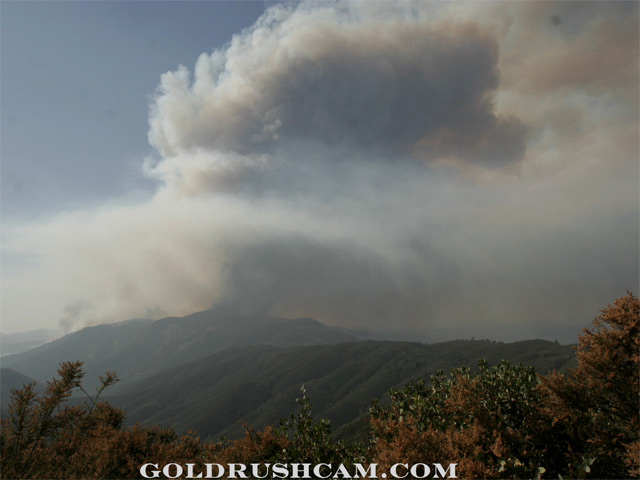
2008 Telegraph Fire in Mariposa County
Sierra Sun Times file photo
Federal personnel and resources contributing to state, local containment response
October 21, 2017 - WASHINGTON – The Department of the Interior, along with its Federal and non-Federal firefighting partners, are supporting the on-going efforts of California state and local firefighters who are leading the combined effort to suppress wildfires that have largely impacted state, local and private lands. Nearly 10,000 Federal firefighters are working with state and local firefighters on six large fires in California. Across the Nation this year, more than 51,500 wildfires have burned 8.8 million acres of Federal, State, Tribal, and private lands.
“The tragic events in California are a stark reminder of the devastating impacts that wildfires can have on lives and communities,” said U.S. Secretary of the Interior Ryan Zinke. “We must be innovative and work diligently with all of our state and local partners to help prevent future losses through management solutions that will benefit current victims as well as generations to come. These wildfires are not only financially costly but also threaten the lives and safety of both the public and firefighters. The Department is identifying ways to address the realities we face in a safer and more effective manner, as we simply cannot afford to continue business as usual.”
In September, Secretary Zinke directed Interior bureaus, superintendents and land managers at all levels to adopt more aggressive practices, using the full authority of the Department, to prevent and combat the spread of catastrophic wildfires through robust fuels reduction and pre-suppression techniques.
The collaborative firefighter efforts are making good progress in containing the fires currently burning in California. Federal wildland firefighting resources outside of California have pulled together late in the season to assist the local and State response. As of last week, the Department has deployed nearly 500 personnel, thirty-nine engines, and numerous aerial resources, including three helicopters and one lead aircraft.
In addition, a 20-member Type 2 handcrew from America Samoa, based at the National Park of American Samoa on the island of Pago Pago, returned to its home base in the South Pacific after completing its firefighting mission. The crew assisted on fires in Trinity County and near Weaverville, California. “It’s great to have the crew back safe in Samoa,” said National Park Superintendent Scott Burch. “They’re a talented crew and very enthusiastic about helping out on mainland fires. They look forward to helping out in the future as the need arises.”
In addition to the National Park Service crews, other firefighting resources were provided by the Bureau of Indian Affairs, Bureau of Land Management and the U.S. Fish and Wildlife Service. Only a week ago, many California wildfires were less than 10 percent contained. Improved weather conditions this week are expected to help firefighters reach near or full containment on most wildfires.
Wildfire activity was above average this year, far surpassing the 10-year average of 5.7 million acres burned. The National Multi-Agency Coordinating Group (NMAC) elevated the National Fire Preparedness Level to “5”, the highest level NMAC declares, on August 10, 2017. The fire season appeared to begin its natural decline, as National Fire Preparedness Level was lowered to “4” on September 19, Preparedness Level “3” on September 22, and Preparedness Level “2” on October 2, 2017. The Preparedness Level was raised back to 3 on October 11, 2017, as additional resources were needed to address the wildfires in California.
Effectively carrying out our firefighting responsibilities in a safe and responsible manner is a major priority for the Department. Having robust and well-trained firefighters is critical to protecting local communities and our nation’s natural resources. The Department actively engages all stakeholders, including other Federal agencies, Tribes, State and local representatives and congressional members and staff, to determine how best to promote the health and safety of the public and firefighters, safeguard communities and protect resources on public and private lands.
The strength of the wildfire suppression system in the United States is based on a standard of shared resources among Federal, Tribal, State, local, and volunteer wildland fire agencies that share firefighters, engines, aircraft and other assets and equipment.
Source: DOI
